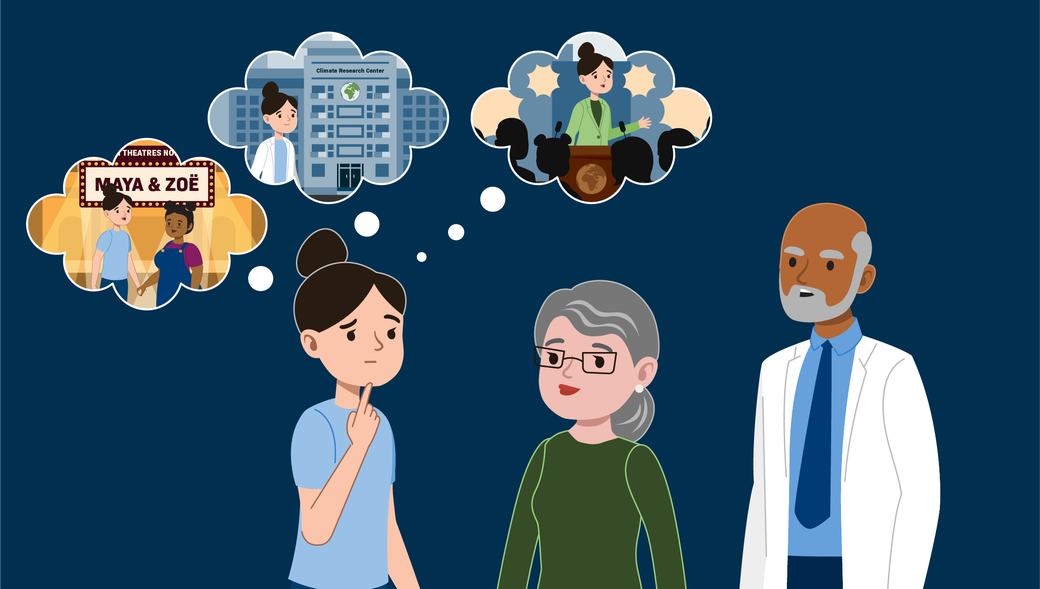Fallacies, Probabilities, and Cognitive Biases: Promoting Critical Thinking with the Scientific Reasoning Cluster
In the age of targeted algorithms and AI-generated content, how can we train ourselves to think critically about what we see? Science is a highly refined and rigorous form of everyday reasoning. We can all become better scientists and improve our day-to-day lives by learning to describe, analyze, and evaluate reasoning.
Designed for high school learners, the Scientific Reasoning cluster leads learners on a guided tour through the essential ingredients of reasoning—claims, evidence, and arguments—and takes a deep dive into common cognitive biases and rational fallacies that impede our ability to reason as well as we can. The cluster ends with a series of practical exercises to help learners flex their newly learned reasoning skills.

Scientific Reasoning
1. Reasoning: What Does It Mean to Reason in Science and Everyday Life?
Follow this pathway to explore the concept and crucial functions of reasoning in science and everyday life. Learners acquire basic vocabulary for discussing reasoning and arguments, and practice translating examples of reasoning from everyday life into precisely stated arguments. There are two main kinds of reasoning: deducing and theorizing. The pathway explores the connection between an argument's logical form and its deductive validity, and applies these concepts to clarify some of the key steps of the scientific method.
2. Evidence: What Is Evidence, and How Do Good Reasoners Respond to It?
This pathway focuses on the central role of evidence in reasoning. Arguments can be logically flawless, but unless they are supported by good evidence, you can’t use them to reason well. Evidence consists of all the information that is currently available to you, either from your environment or stored as background knowledge. The best way to use your evidence to reason well is to proportion your beliefs to your evidence. This means letting your evidence determine how confident you are in your beliefs—the stronger your evidence, the more confident you can be.
3. Cognitive Bias: How Does Cognitive Bias Undermine Good Reasoning, and How Can We Counteract Its Influence?
This pathway introduces the concept of cognitive bias and identifies heuristic reasoning and motivated reasoning as the two main sources of cognitive bias. Learners will become familiar with confirmation bias, key heuristic biases (availability and representativeness), and a variety of motivated biases (self-serving bias, groupthink, and more). Since minimizing the influence of cognitive bias is a central goal of the scientific method, learners will explore how standard scientific practices are designed to mitigate bias. These techniques can also help to improve our everyday reasoning.
4. Fallacies: How Can We Recognize Bad Arguments and Resist Their Pull?
This pathway develops the idea of background assumptions in reasoning and defines an informal fallacy as an argument that rests on a false background assumption. A variety of common examples, such as ad hominem, appeal to authority, and false dilemma, are introduced by way of the false background belief(s) that they rely upon.
5. Probability: How Can We Use Evidence to Reason about Chances?
This pathway will deepen learners' understanding of how evidence can help us to reason accurately about chances and uncertainty. Using visualizations and relatable examples from everyday life, learners will explore foundational probability concepts, like independence, conditional probability, and base rates. By learning to identify and avoid common mistakes, such as the gambler’s fallacy and conjunction fallacy, they will enhance their ability to reason critically. Finally, learners will practice applying these insights to realistic contexts, from assessing health risks to interpreting the reliability of test results, helping them to make better-informed decisions about probability.
6. Practice Uncovering Arguments
To round out the learning, this pathway provides eight step-by-step exercises that learners can use to build key skills and confidence in their ability to uncover arguments that are expressed in everyday language and translate them into standard form.
Explore more clusters in the LabXchange library!



.svg)

.svg)



